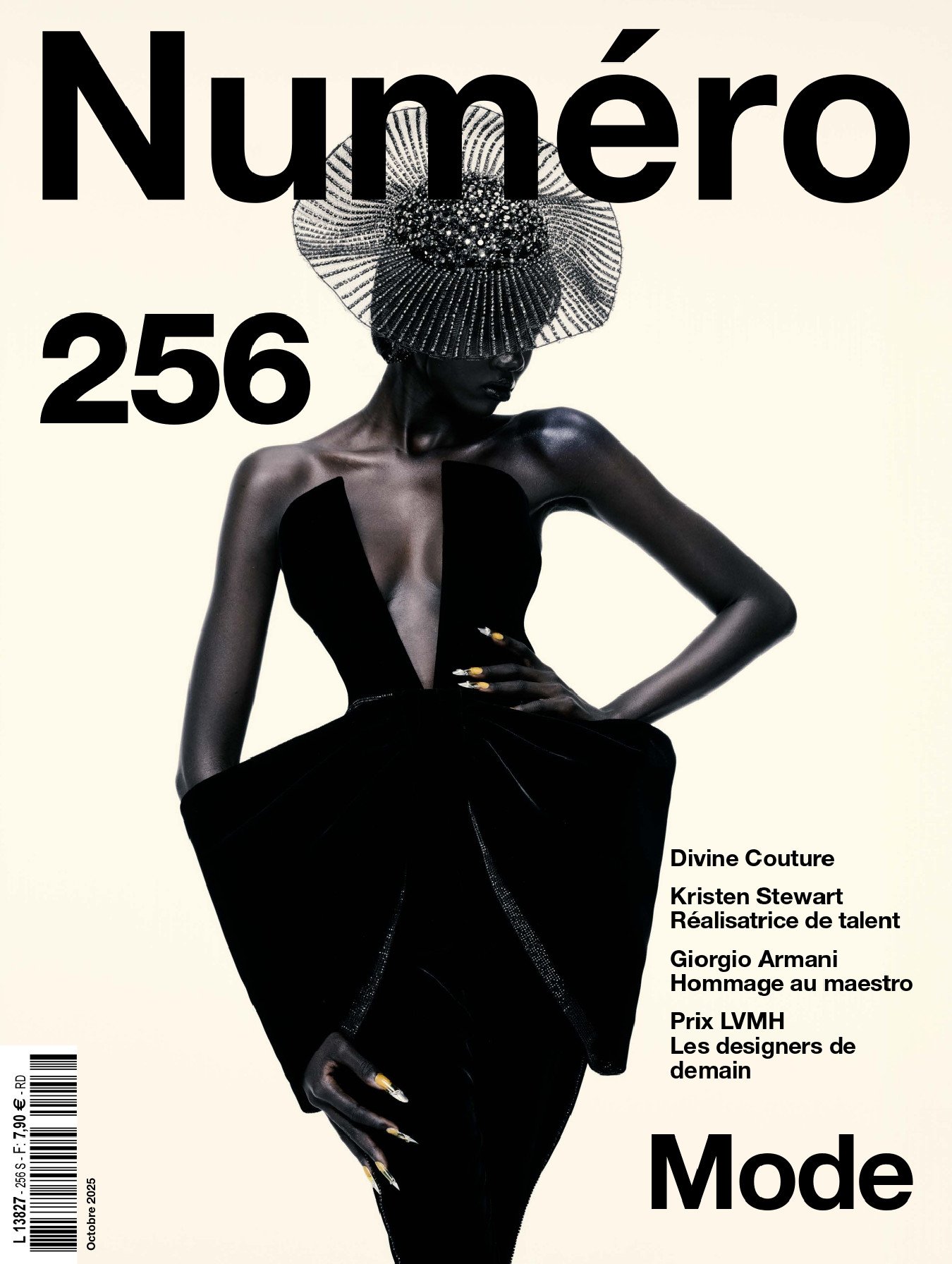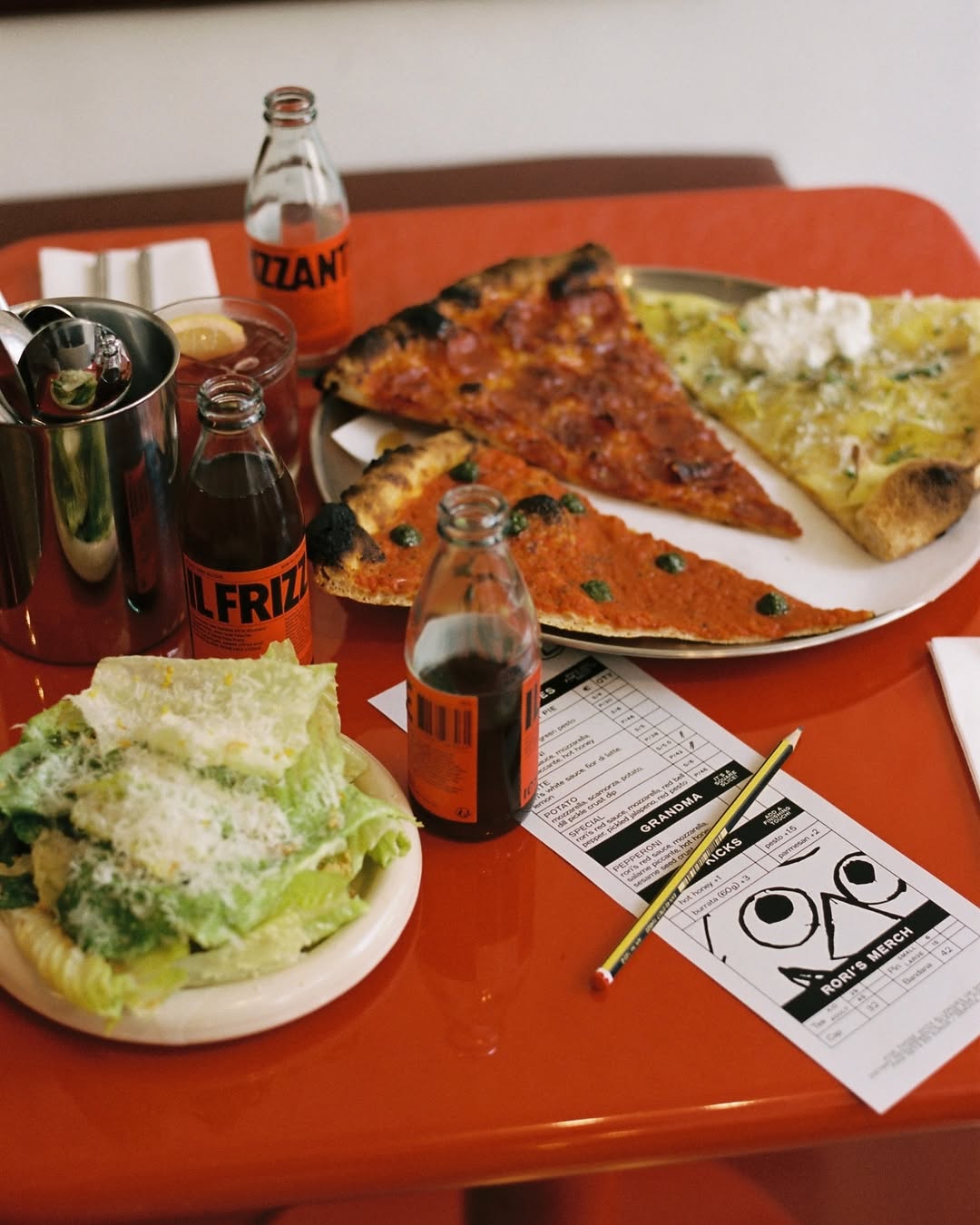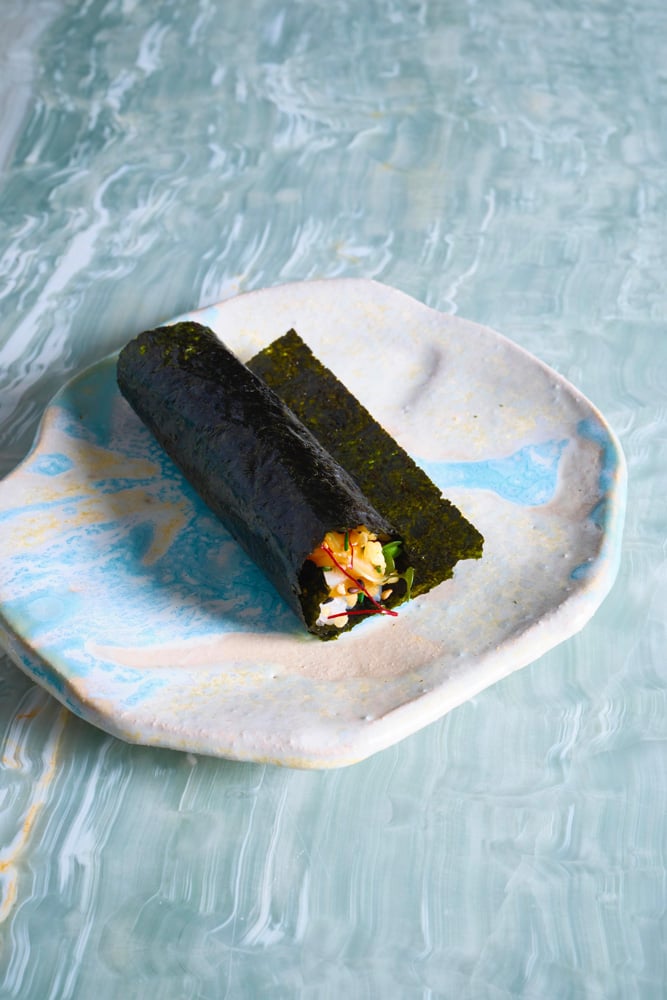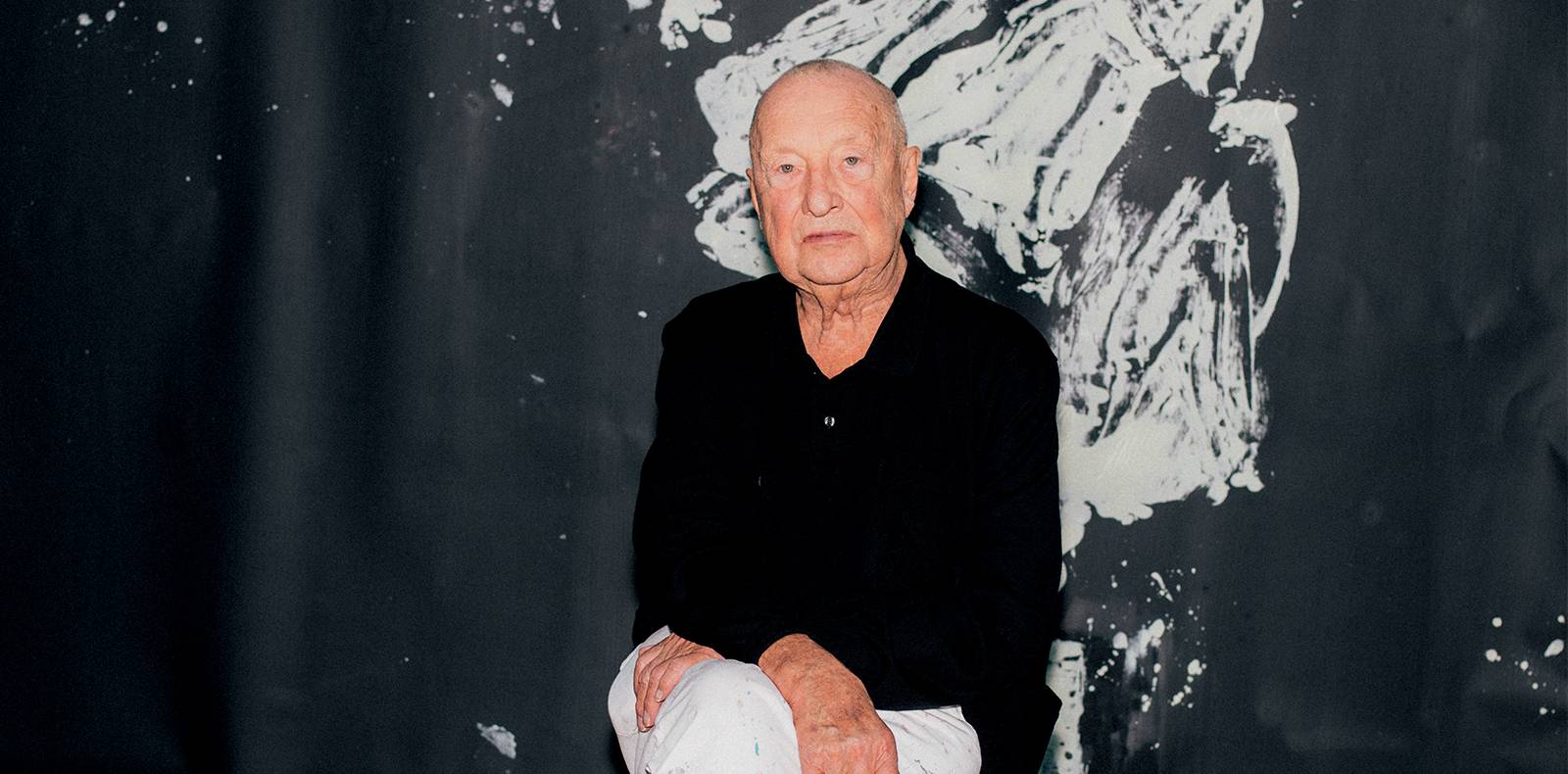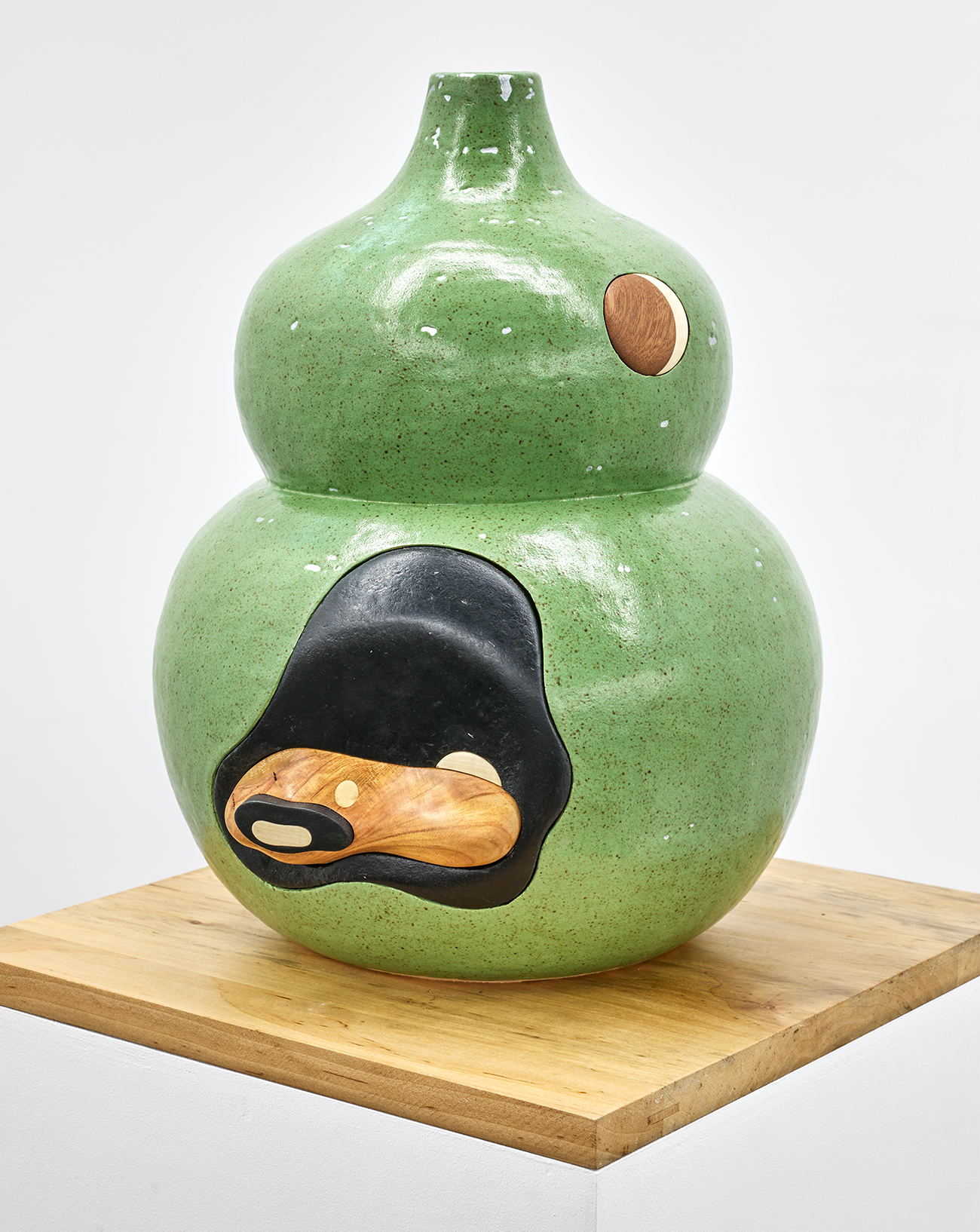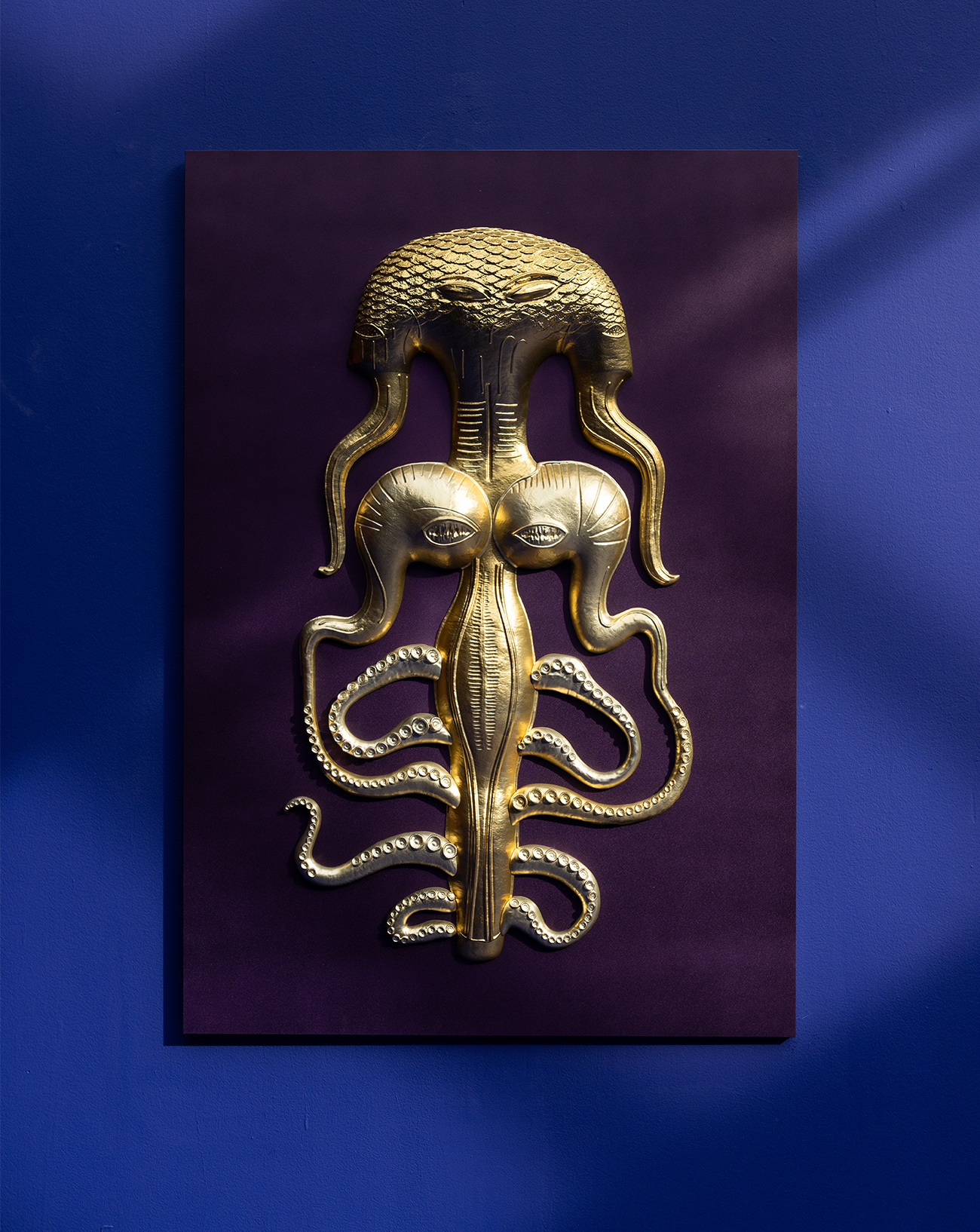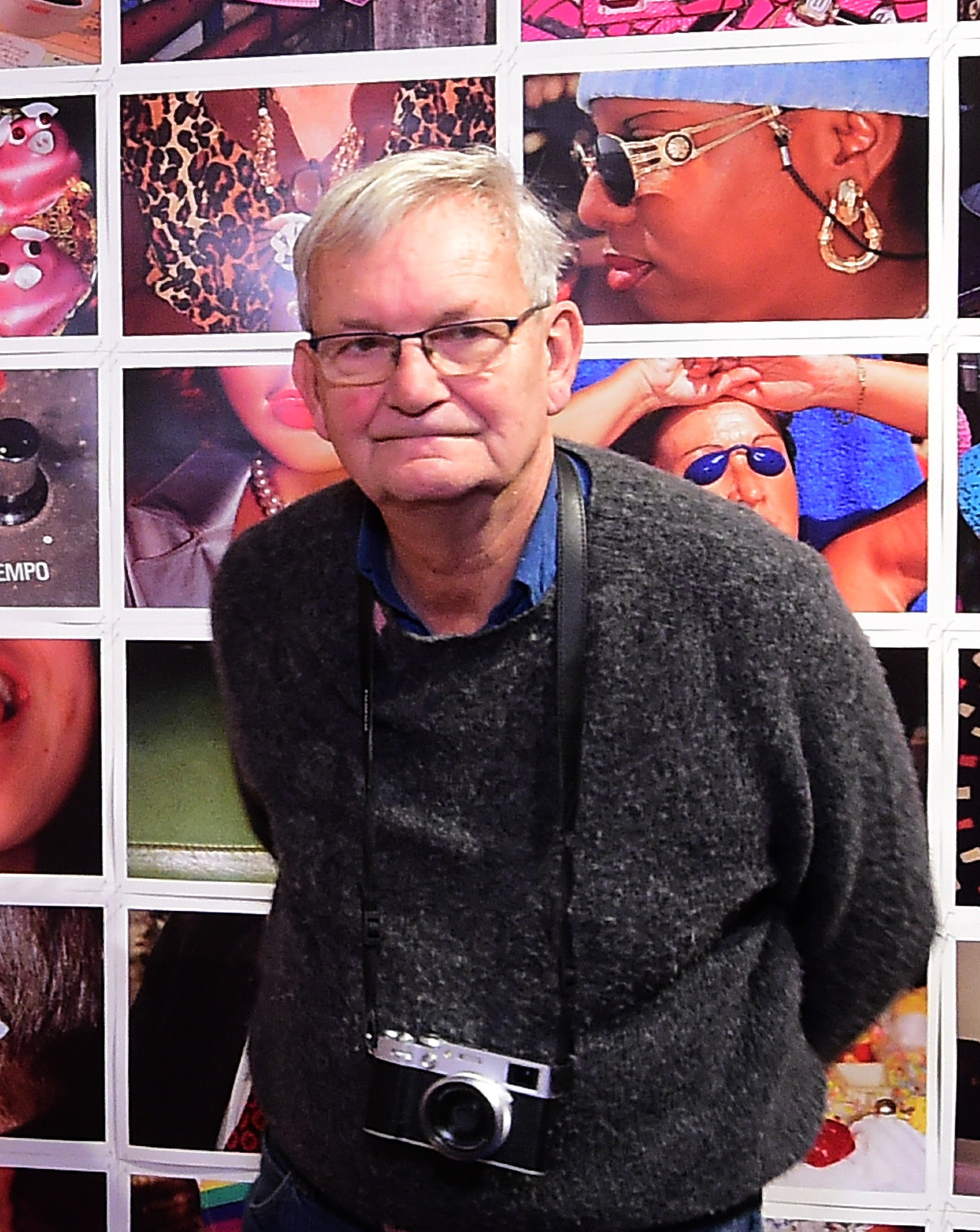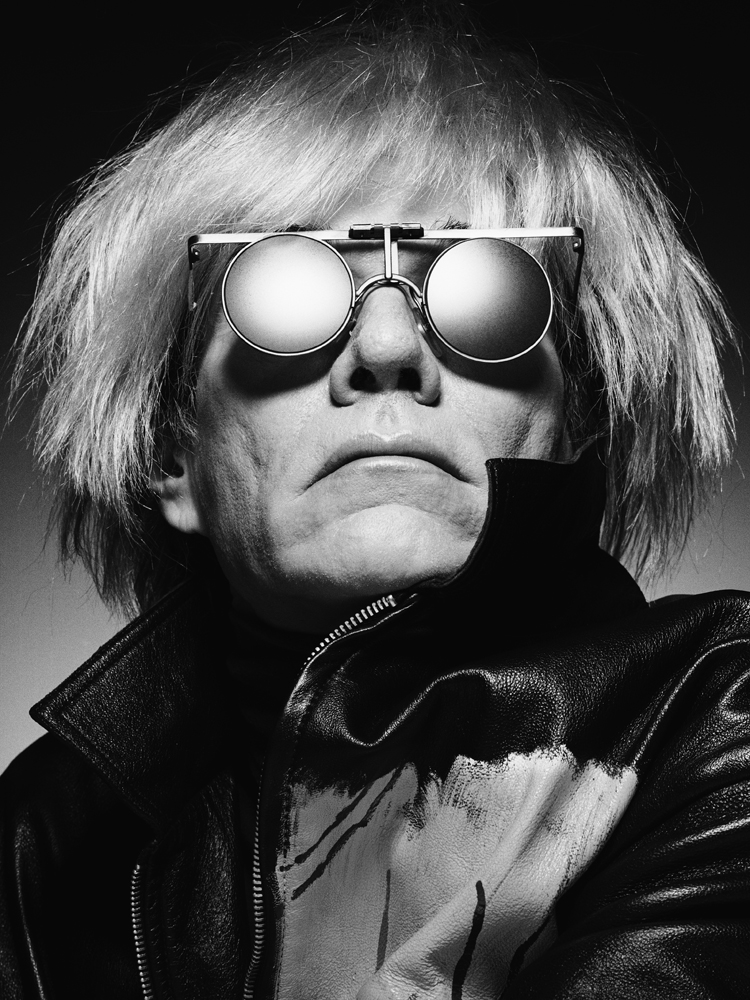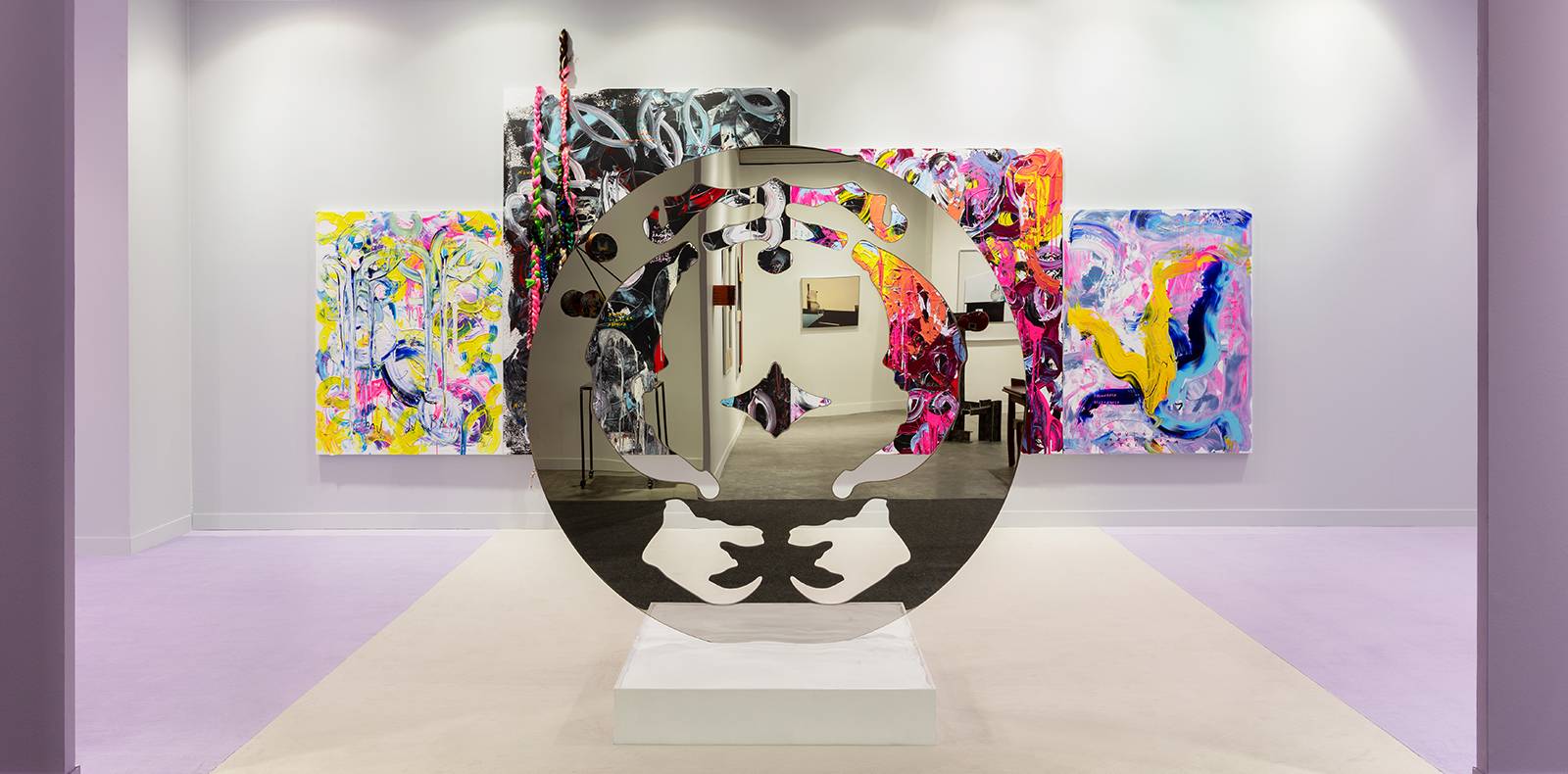
22
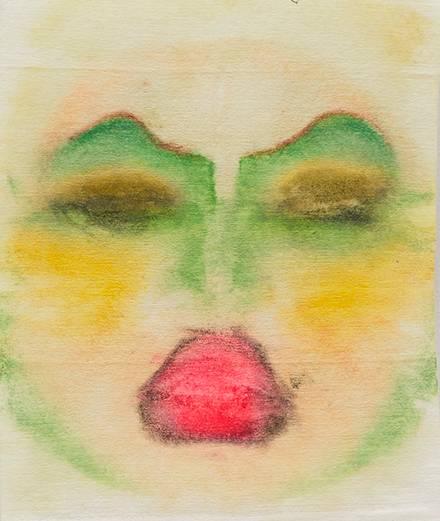
22
FIAC 2021: 10 stands to visit absolutely
After a blank year in 2020, the FIAC is back in Paris and is taking over the space of the Grand Palais Éphémère for the first time. On the program, more than 160 galleries from 26 countries, including about thirty new exhibitors and many discoveries. Between Martin Margiela’s first sculptures, Thomas Bayrle’s new and site-specific installation, little-known works by the great figures of land art or surrealism, discover the stands not to be missed in this 47th edition.
Published on 22 October 2021. Updated on 10 March 2025.
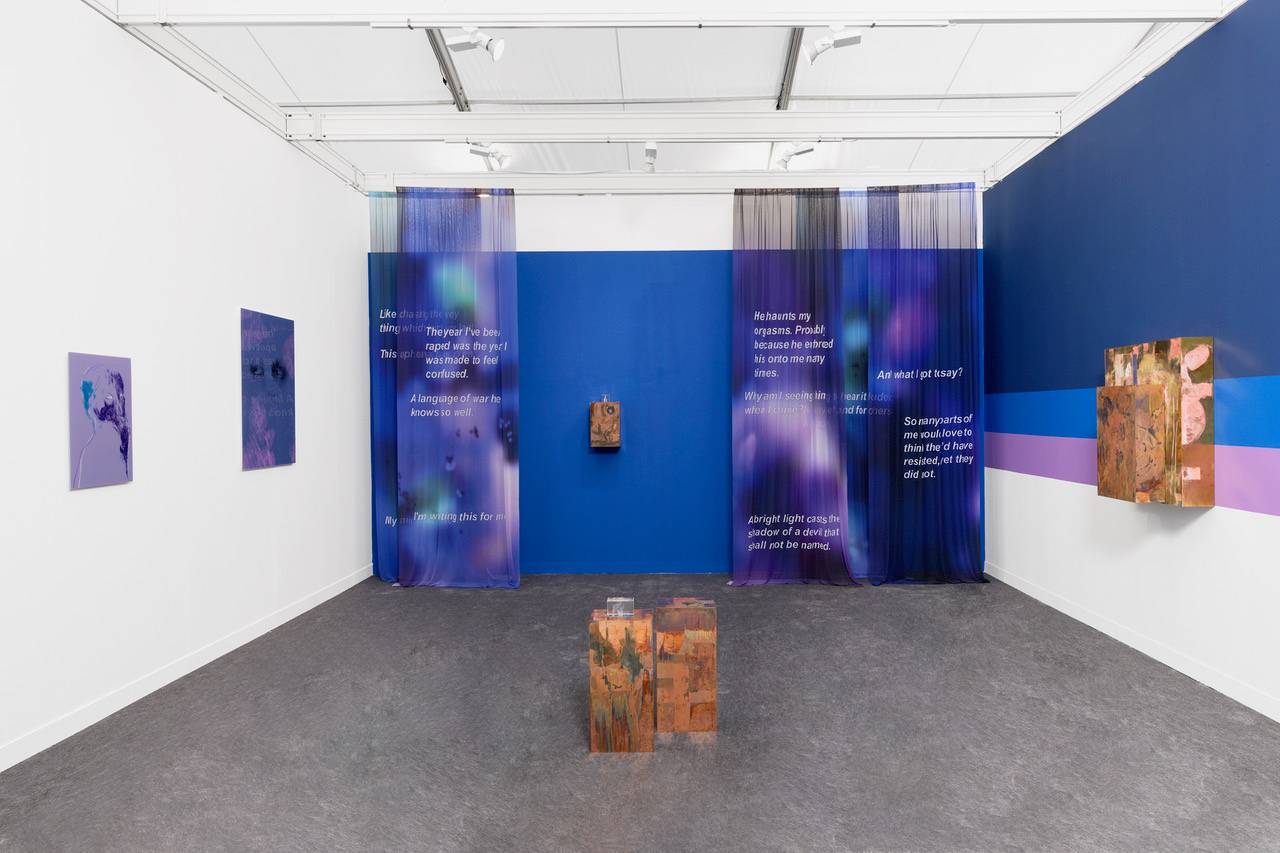
1. The Ghosts of Paul Maheke at the Sultana Gallery
For its first participation in the FIAC, the Parisian gallery Sultana has chosen poetry on a purple background. Dedicated to Paul Maheke, his stand offers a beautiful overview of the French artist’s practice, eclectic and multidisciplinary but also poetic and mystical, where the body and language tell of their own disappearance. On the floor and walls, we find his parallelepiped assemblages mixing copper plates altered by chemical emulsions and small blocks of transparent glass filled with ghostly shapes, inspired by the devil. It is also this figure that inhabits the engraved drawings of the young man, whose bodies emerge through their eyes and their contours. Recurring in her practice, new tinted curtains veil the back of the stand, covered with fragments of poems in English.
Stand F06.
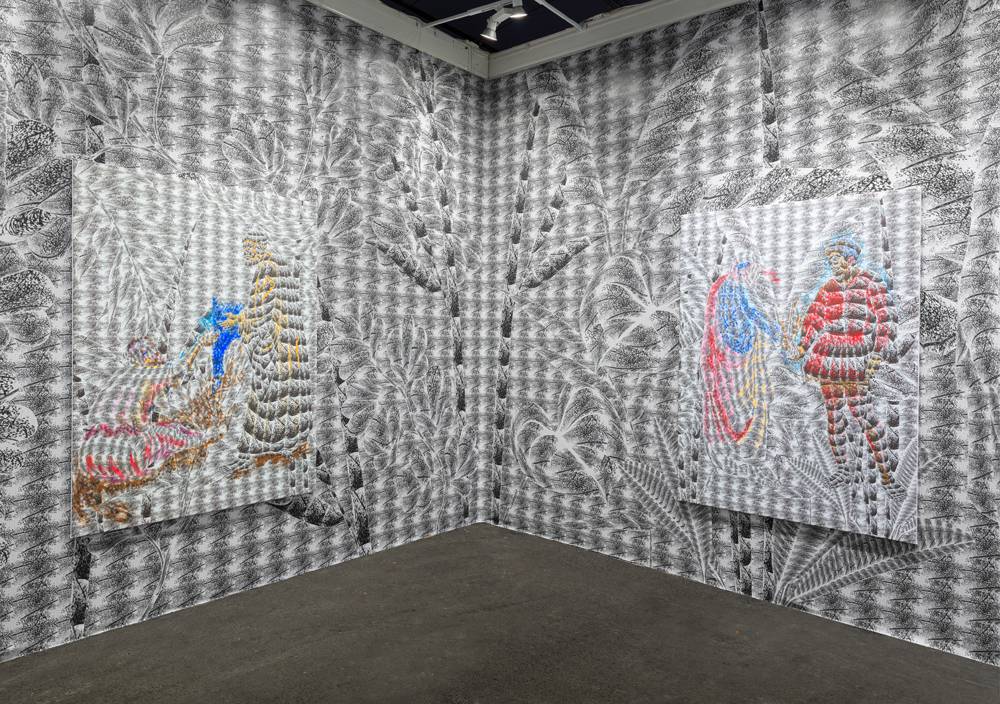
2. Thomas Bayrle’s anachronistic wallpapers at Neugerriemschneider
Visitors to the FIAC are used to the white picture rails, which are often the most conducive to the presentation of a set of works. Against this tropism, the Berlin gallery Neugerriemschneider and its artist Thomas Bayrle chose to wallpaper the stand to merge his paintings into a universe in shades of grey, graphic and pop, yet much darker than the aesthetics left by Andy Warhol and Roy Lichtenstein. Playing on the repetition of digital motifs, the German artist has taken up scenes inspired by Italian Renaissance frescoes in this deliberately anachronistic new creation, in reference to masters such as Masacio or Masolino, in the manner of the Toiles de Jouy. Emblematic objects of the industrial age also appear in these dense ensembles, such as a Citroën engine mounted on a base or a car appearing in a large collage on paper.
Stand A20.
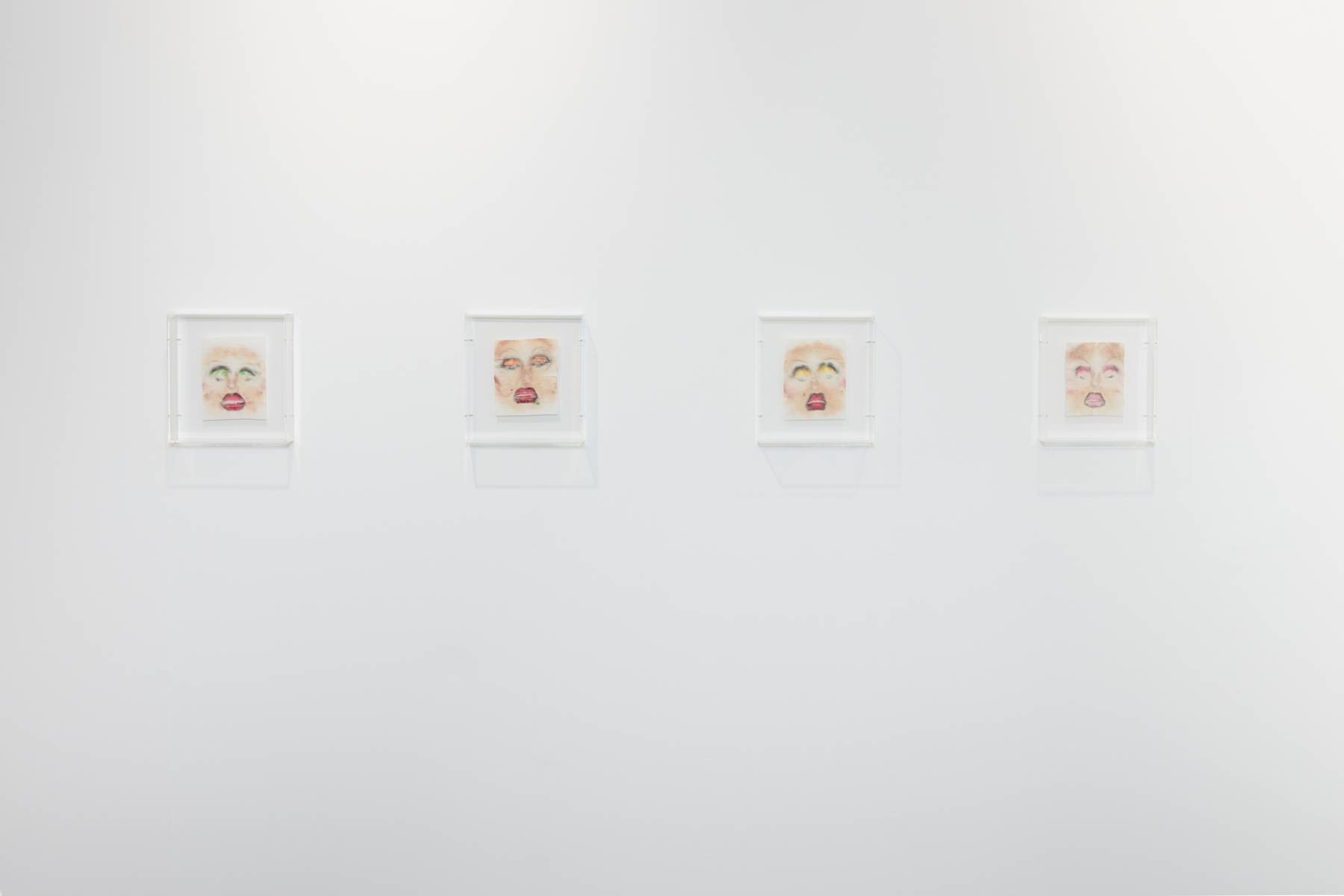
4. The thousand make-up faces of Sin Wai Kin at Soft Opening
Strange faces line up on the white walls of the Soft Opening stand. As you get closer, you discover a succession of prints of painted faces left on make-up remover wipes. Through her drag queen character, Sin Wai Kin – formerly Victoria Sin – explores the fictional possibilities offered by cross-dressing through video, performance and objects. Transfers of the faces of queer performers from the London scene and an arsenal of new characters imagined by the Canadian-born artist, these faces assert themselves as contemporary reinterpretations of the mask while Sin Wai Kin herself appears in the flesh, meditative, in one of her unreleased films.
Booth G24.
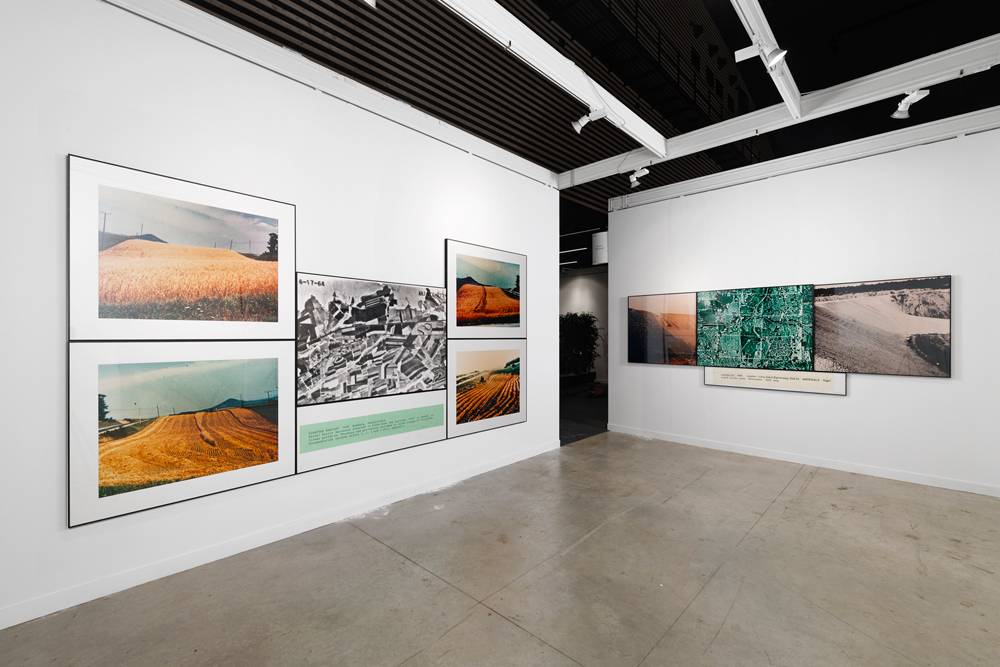
5. The master of land art Dennis Oppenheim at the Galerie Mitterrand
If Robert Smithson and Walter De Maria often steal the show, Dennis Oppenheim remains one of the great names in land art who deserves to be celebrated at his true value. This is what the Galerie Mitterrand is aiming for, which is making its comeback at the fair this year, by taking the bold step of dedicating its stand to the American artist who died in 2011. The installation brings together, among other things, photographic and cartographic traces of a 1969 project in a wheat field in Pennsylvania, where the landscape is transformed by the passage of a harvester, as well as images of other works made by the artist in the late 60s, transcribed according to the aesthetic tradition of the movement of the late twentieth century. Unique, these prints and cards are recomposed according to the layout imagined by their author.
Stand C37.
6. Kévin Bray’s post-human visual compositions in Stigter Van Doesburg’s work
At the Stigter Van Doesburg gallery, based in Amsterdam, the works of Kévin Bray are striking. By their shape, first of all. Their white supports, printed in 3D, deviate from the usual exhibition devices by their phallic hooks, their arrows pointed towards the visitor or their convexity. Secondly, by their contents: compositions on the border between the real and the virtual, where deformed faceless silhouettes, unidentified hybrid creatures and fragments of bloated bodies float. These contemporary hieroglyphics in volume respond, here, to three paintings by Pim Blokker, tender urban scenes of everyday life, and a photograph by the Frenchman Jimmy Robert.
Booth G12.
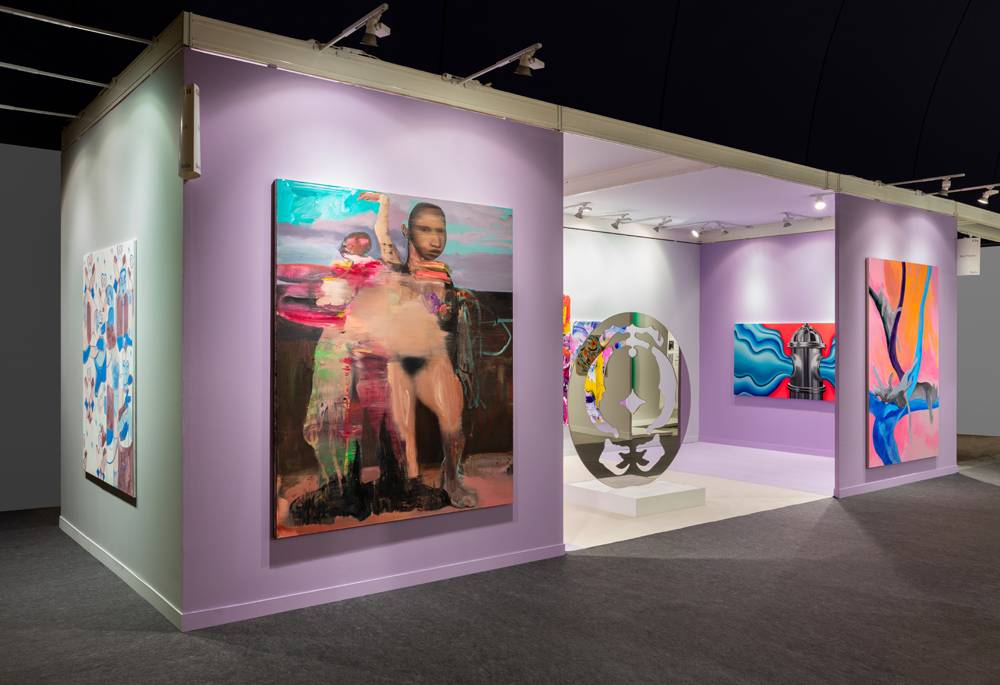
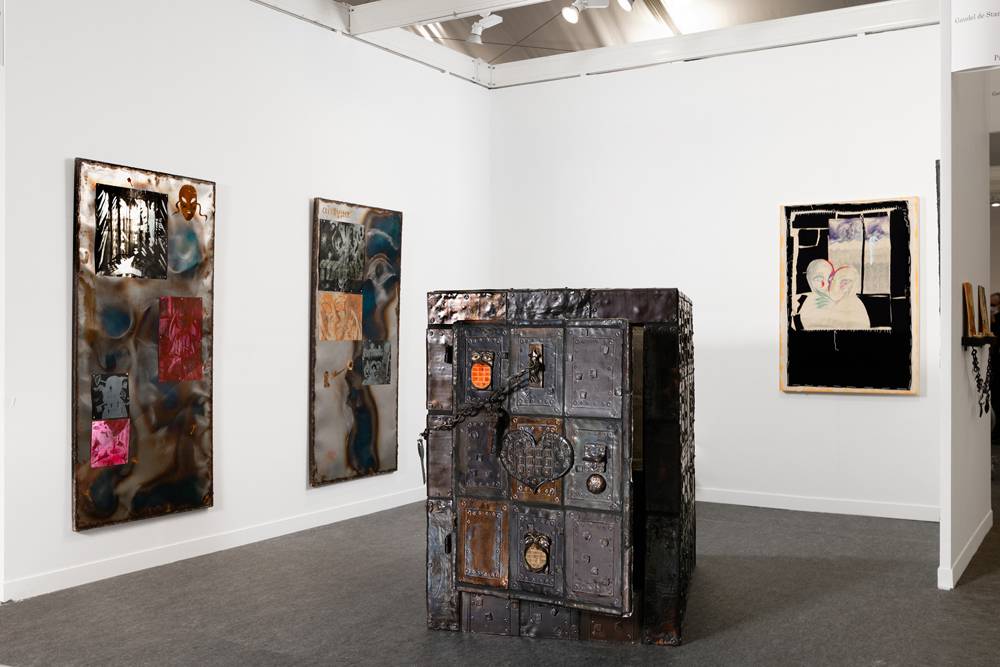
8. The mysterious relics of Gaia Vincensini at Gaudel de Stampa’s
What can a safe at the FIAC do, if not encourage us to discover what it contains? On the stand of the Parisian gallery Gaudel De Stampa, Gaia Vincensini offers a large ceramic installation called Trojan horse, austere brown and cold container of intimate relics: inside are hidden little cherubs, while the container is enriched with keys, hearts and Swiss symbols. This massive object is matched by vertical plates in sepia tones where a few faces engraved in etching on zinc compose a poetic imagination on these supports.
Booth G25.
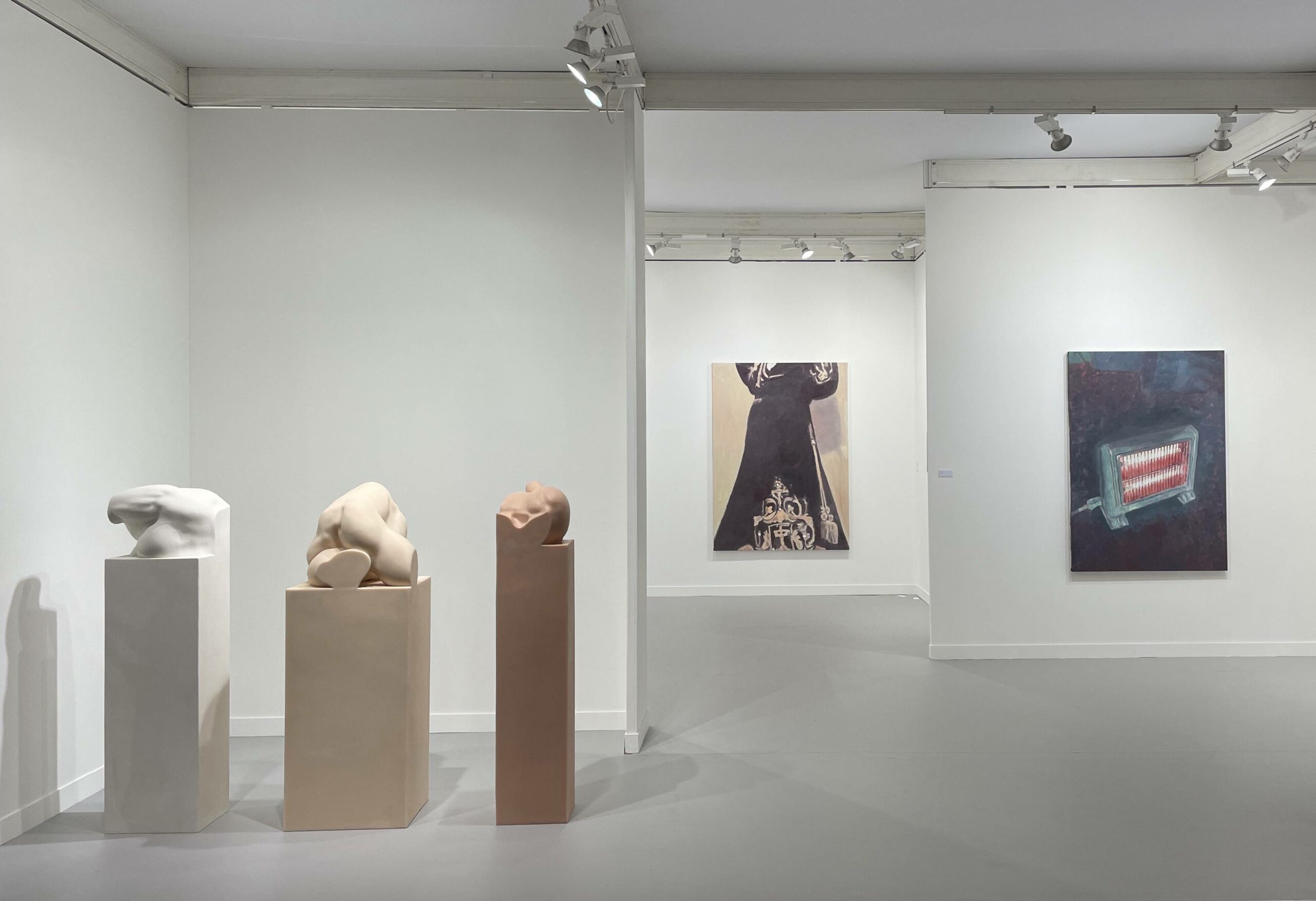
3. Subversive figures of the early twentieth century at the Ubu Gallery
In New York, the Ubu Gallery has asserted itself since the 90s as a faithful defender of the avant-garde of the early twentieth century, from the Dadaists to the Surrealists. Its stand at the FIAC gives pride of place to major and subversive figures of this period such as Hans Bellmer, with several shots of his famous disarticulated dolls, and Max Ernst, present through a photograph of Paris from 1929. The installation is also complemented by a series of drawings and paintings by the artist and writer Unica Zürn, also German, whose enigmatic graphic work is populated by polymorphous creatures and multiple faces.
Stand D05.
7. A set of colorful paintings at Peres Projects
A profusion of colours at the Peres Projects stand. Within its lilac and sea green walls, the Berlin gallery presents a selection of eight artists, painters and sculptors. We discover pictorial deformations of the human figure by the Londoner George Rouy and the Filipino Nicholas Grafia, a large painting by the Brazilian Rafa Silvares, obsessed with the pipes and pipes he represents in a neo-pop style, a huge ultra-colorful quadriptych signed by the American Richard Kennedy, or an abstract canvas by Donna Huanca, whose soft, aquatic hues are echoed in his large circular mirror sculpture.
Stand C04.
9. The Body as Seen by Margiela and Marlene Dumas at Zeno X Gallery
It is a stand all in soft and pastel shades that the Zeno X Gallery offers, where the body emerges in discreet evocations. On the program, two paintings by the Flemish Luc Tuymans, known for his representations of everyday life in diluted colors, to which a female genitals painted by the great South African portraitist Marlene Dumas responds, a tender celebration of intimacy. On paper, Pélagie Gbaguidi offers dense drawings where the gesture reveals the spontaneity of a sketch. But the more striking will undoubtedly remain the unprecedented presence at the FIAC of the famous Belgian designer Martin Margiela, emissary of radical and conceptual fashion, who is unveiling – for the first time – his sculptures to the public on the opening day of his exhibition at the Lafayette Anticipations Foundation : three molded silicone sculptures in which the work and the base merge to represent only a piece of body in majesty.
Stand B06.
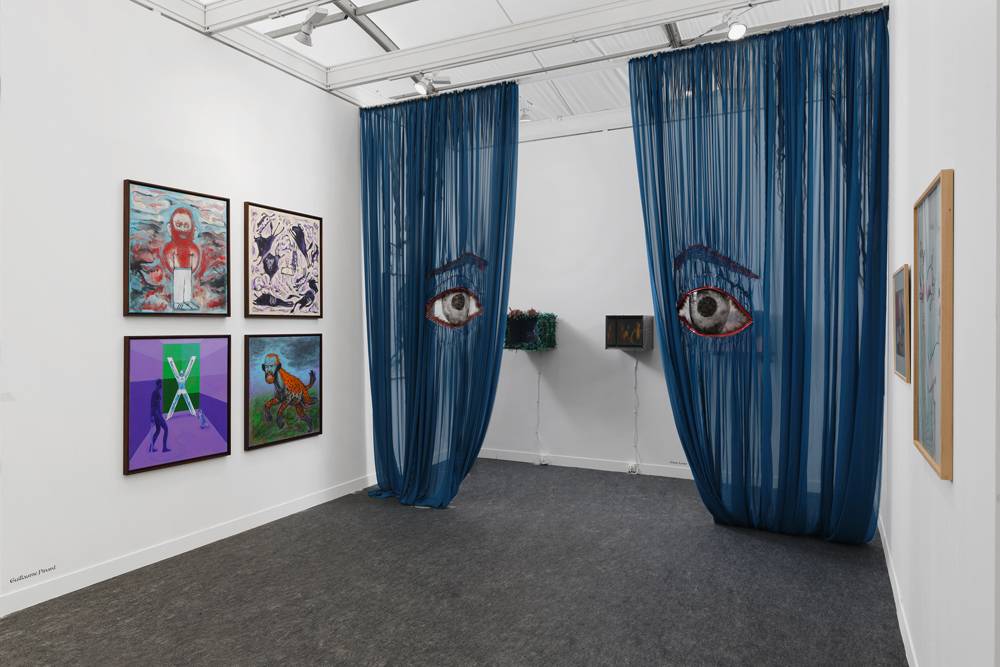
10. The hybrid and surrealist characters of the Anne Barrault gallery
Big eyes stare at visitors from the stand of the Anne Barrault gallery. On a pair of blue curtains, this gaze – embroidered by Marie Losier – accompanies strange little boxes that seem to come to life by their feathers or wigs, as well as faces drawn on paper and her videos. A universe on the verge of surrealism, which is joined by Roland Topor’s drawings, enigmatic scenes made at the end of the 70s or early 90s, as well as the recent paintings of Guillaume Pinard, in which men transform into monkeys or pumas to compose a hybrid bestiary.
Booth F38.
